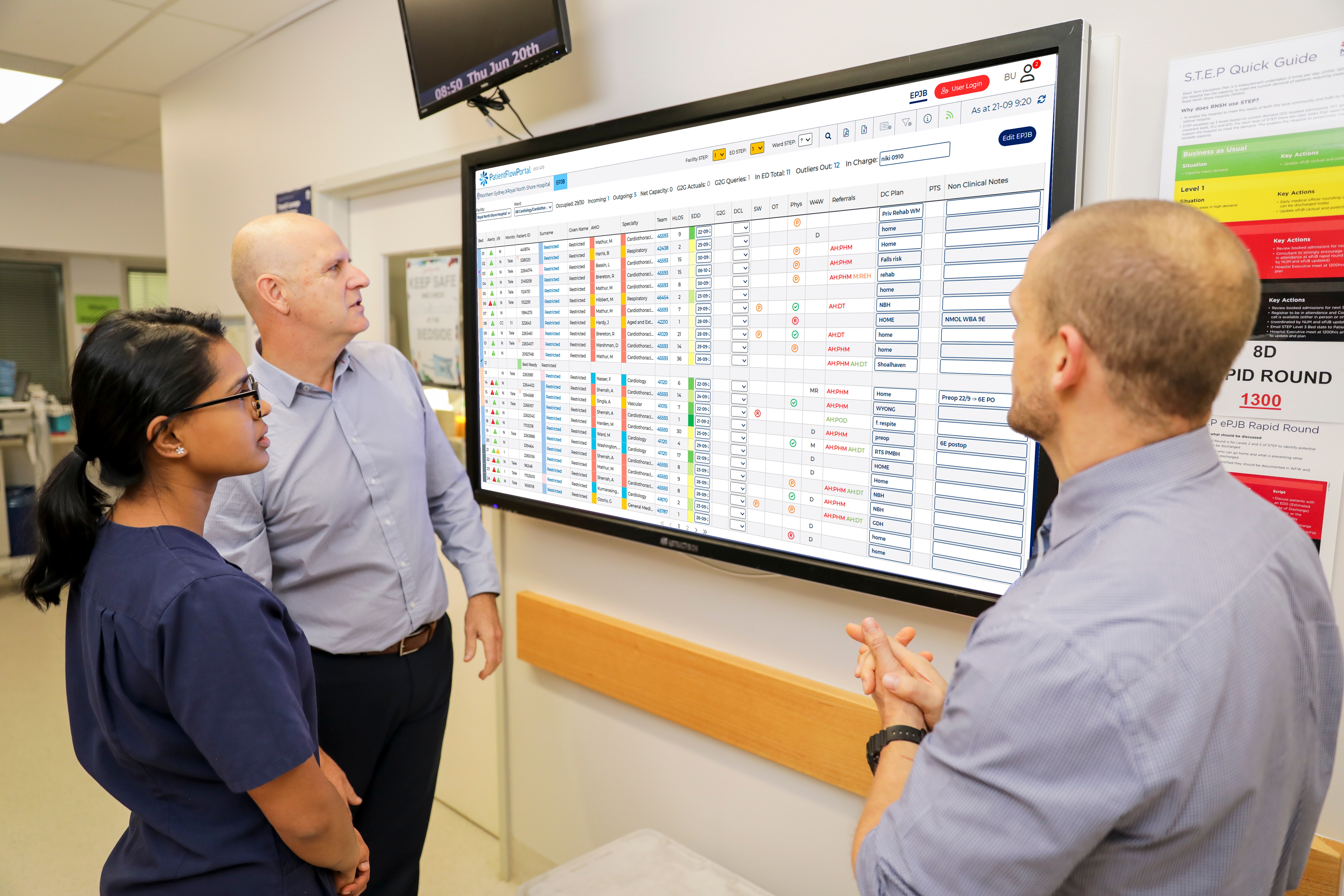
NSW Health is taking a transformative journey to modernize and streamline its technology systems. The NSW Ministry of Health has the role of “system manager” for the NSW public health system. More than 228 hospitals in New South Wales face fragmented data, inefficiencies in coordinating patient flow and care, and need a platform that can curate and integrate data from numerous sources in real time.
The creation of a statewide operational data store (ODS) supported a platform that provides visibility into patient journeys in environments with multiple patient management systems and electronic medical records. This ODS is now feasible by migrating NSW Health's legacy infrastructure to Microsoft Azure, allowing you to take advantage of the scalability, security and advanced analytics capabilities that the cloud offers.
“We're committed to providing a new approach to system performance support,” said Pedram Bidhendi, Director of System Performance Support at NSW Health.
Today, ODS acts as a real-time operational and analytics platform. The store integrates data from numerous sources across the health system to support the seamless flow of information. By realizing the ODS vision and working with Microsoft Technologies, NSW Health has modernised its operations and set a stage of continuous innovation in healthcare delivery. This progress ensures better outcomes for patients across the state.
The latest Australian Institute of Health and Welfare (AIHW) report shows that NSW is the best jurisdiction for emergency department patients who are seen on time (74%) and patients undergoing planned surgery within the clinically recommended time frame (85.3%). NSW continues to provide safe, high quality care.
Optimizing resource management
ODS plays a key role in how NSW Health manages its vast network of hospitals and health facilities. By centralizing data from more than 34 different systems, ODS has significantly improved resource management across the state. One of the most practical applications of this technology is patient demand planning and resource allocation.
Once real-time data was integrated into ODS, these processes were converted. Through a unified platform, NSW health staff now have access to up-to-date information on bed availability, patient discharge and resource needs. This not only streamlined the process of hospitalization and discharge of patients, but also allowed healthcare workers to more effectively predict and plan demand.
For example, the Patient Flow Portal, an important feature of ODS, can provide nurses, alliance health teams, patient flow managers and hospital executives with a clear, integrated view of resources, allowing informed decisions to be made quickly and efficiently. This has improved more effective resource utilization, reduced bottlenecks and patient care throughout the health system.
Enhanced patient care coordination
Beyond resource management, ODS has played a transformative role in enhancing patient care coordination across NSW Health's broad network.
At the heart of this improvement is a patient flow portal that seamlessly integrates with a variety of Microsoft technologies, including Power BI. This portal provides healthcare teams with a comprehensive view of their patients' journeys, from hospital admission to discharge, allowing better coordination and continuity to care.
An important advantage is that it automates patient status updates and task management. For example, this portal allows nurses and managers responsible for patient flow to monitor real-time updates to patient status and remove the need to navigate multiple systems.
This integration streamlined communication between different departments and reduced reliance on time-consuming manual processes such as telephone calls and paperwork. As a result, healthcare professionals can respond to patients' needs more quickly, coordinate care plans on the spot, and allow patients to receive the most appropriate care at every stage of their journey. The transparency and efficiency provided by these tools not only improve patient outcomes, but also reduces the administrative burden on healthcare staff and allows them to focus on direct patient care.
“As a nurse supporting the use of the ODS system by clinical and management teams across the state, we saw first-hand how the Patient Flow Portal has changed the ability to manage patient care.” “The portal empowers nurses and managers by providing real-time access to critical information. This not only improves decision-making, but also provides patients with better, more coordinated care.”
Transform your healthcare with data-driven innovation
The introduction of ODS has transformed operations within NSW Health, setting benchmarks for the broader healthcare industry and demonstrating the role that technology can play.
Enhances large-scale healthcare delivery. The success of ODS has sparked interest within Australia and internationally from other healthcare organizations, and is seeking to replicate the model to achieve similar efficiency and improvements in patient care. In addition to supporting health systems performance, ODS is also being used as a data asset that plays a key role in responding to the Covid-19 pandemic, and is being used as a fundamental data asset for public health, emergency, illness and symptomatic surveillance, including supporting financial management specialized for patient costs-specific real-time management and digitalisation of billing processes.
NSW Health has ambitious plans to further strengthen its ODS and expand its capabilities. One of the most anticipated projects is called the new Gen Matrix, and aims to revolutionize patient transport decisions using advanced analytics and machine learning models. The project will allow paramedics to get more detailed information about where patients are being taken, taking into account real-time data on patient status, hospital capabilities, and available community care options. Additionally, NSW Health is integrating ODS with emerging technologies such as Azure Machine Learning, including leveraging the integration capabilities of Azure Machine Learning and Epic, further improving patient care and operational efficiency.
As NSW Health continues to innovate, ODS remains a fundamental element, providing the data-driven insights needed to meet the evolving demands of modern healthcare.
“The success of ODS highlights the importance of leveraging cutting-edge technology in building resilient and responsive healthcare systems, a way to adapt to the future challenges of patients in New South Wales and improve patient outcomes.”

